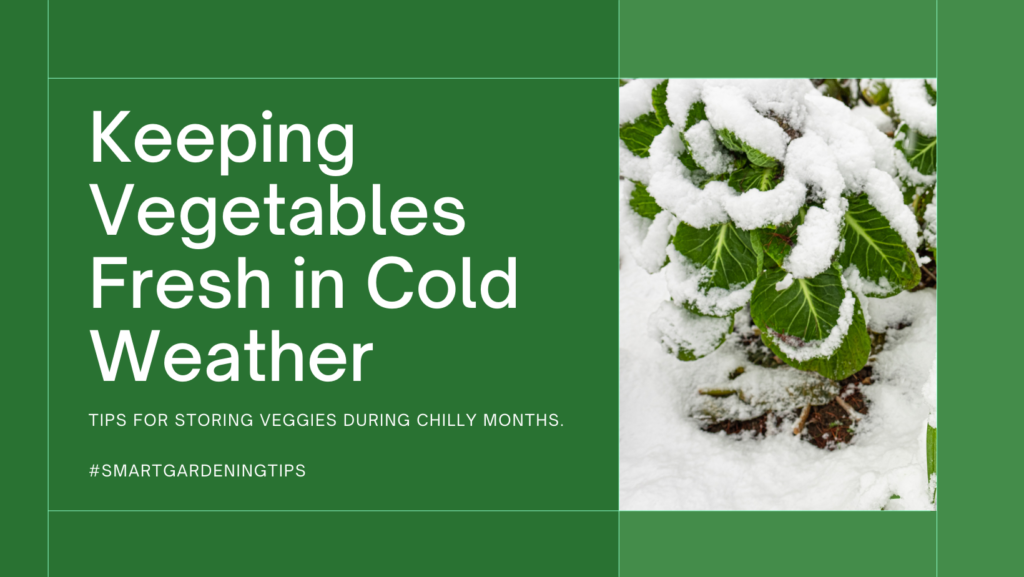
Welcome to our guide on how to sustain vegetables during cold seasons. If you’re an avid gardener or someone interested in growing your own produce, you know that frost can pose a challenge. However, with the right strategies and techniques, you can ensure a healthy winter harvest of vegetables.
Key Takeaways:
- Timing is crucial when harvesting vegetables before the frost hits.
- Utilize protective measures like cold frames and row covers to shield your crops.
- Mulching is an effective way to provide winter protection for your vegetables.
- Implement pest control strategies to safeguard your crops during the cold months.
- By adopting these strategies, you can enjoy bountiful harvests throughout winter.
The Importance of Maintaining Vegetables During Cold Seasons
Before delving into the specific techniques, let’s discuss why it is crucial to maintain vegetables during cold seasons. Cold temperatures and frost can damage or even kill delicate plants, resulting in a failed harvest. By implementing appropriate strategies, you can extend the growing season, increase the chances of a successful winter harvest, and enjoy fresh vegetables throughout the cold months.
During cold seasons, protecting your vegetables is essential to preserve their health and vitality. The cold weather, especially frost, can cause significant damage to plants, leading to stunted growth, loss of nutrition, and even plant death. To ensure a bountiful winter harvest, it is paramount to be proactive in maintaining your vegetables.
One of the primary reasons for maintaining vegetables during cold seasons is to maximize the yield. By taking appropriate measures to protect your crops from the harsh elements, you can extend the length of the growing season and continue to reap the rewards of your hard work throughout the winter months.
“Maintaining vegetables during cold seasons is not only about preventing damage; it’s about nurturing and supporting their growth, allowing them to thrive in challenging conditions.”
Moreover, maintaining vegetables during cold seasons allows you to enjoy a diverse and nutritious diet all year round. By carefully selecting cold-tolerant vegetable varieties and protecting them from harsh weather, you can have a continuous supply of fresh, homegrown produce even in the depths of winter.
Enhancing Flavor and Quality
Maintaining vegetables during cold seasons can also lead to an improvement in flavor and quality. Some vegetables, like kale, Brussels sprouts, and carrots, develop enhanced flavors when exposed to cold temperatures. Additionally, the slow growth caused by colder conditions can result in more tender and succulent vegetables, providing an exceptional culinary experience.
Environmental Benefits
Maintaining vegetables during cold seasons also has several environmental benefits. By cultivating and supporting winter vegetables, you are reducing your carbon footprint by decreasing the need for long-distance transportation of produce. Additionally, growing your own vegetables during the colder months contributes to the overall sustainability of your food system and reduces reliance on energy-intensive methods of food production.
| Benefits of Maintaining Vegetables During Cold Seasons | |
|---|---|
| Maximizes yield and extends growing season | Enjoy a diverse and nutritious diet throughout winter months |
| Improves flavor and quality of vegetables | Reduces carbon footprint and supports sustainability |
Overview of Challenges Faced in Winter for Vegetable Cultivation
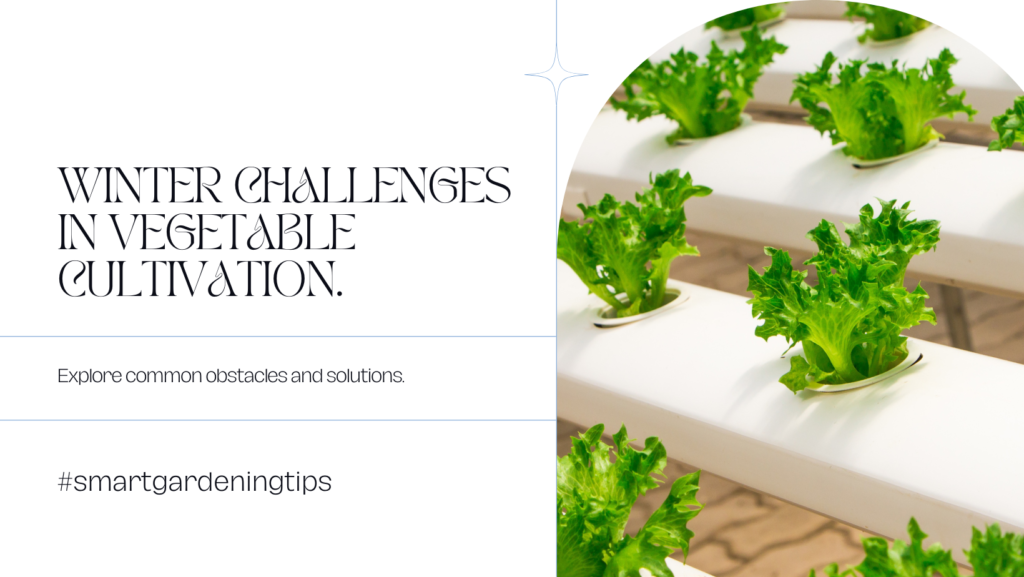
Winter presents unique challenges for vegetable cultivation, requiring careful attention and strategic planning to ensure the health and survival of your plants. Understanding the specific obstacles faced during this season is essential for implementing effective strategies that will help you maintain a thriving vegetable garden even in the cold months.
1. Low Temperatures
One of the primary challenges of winter vegetable cultivation is the frigid temperatures. Vegetables are sensitive to extreme cold, which can inhibit growth and damage plant tissues. It is crucial to select cold-hardy varieties and take measures to protect your crops from freezing temperatures.
2. Frost
Frost poses a significant threat to vegetable crops during winter. When plants are exposed to freezing temperatures, ice crystals form on their tissues, causing cellular damage and ultimately leading to plant death. It is important to identify the first frost date in your area and plan your harvest accordingly to avoid frost damage.
3. Shorter Daylight Hours
In winter, the length of daylight hours decreases significantly, which affects the plant’s ability to perform essential photosynthesis and grow. This limited light availability can hinder the growth and development of vegetables. Adjusting your planting schedule and providing supplemental lighting, if necessary, can help mitigate the impact of shorter daylight hours.
4. Moisture Management
Winter weather can bring challenges in managing moisture levels in the soil. Excessive rainfall or snowmelt can lead to waterlogged conditions, which can be detrimental to the root systems of your vegetables. On the other hand, dry winter conditions can cause dehydration and stress in plants. Proper drainage and irrigation practices are essential to maintain optimal moisture levels for the healthy growth of your crops.
5. Pests and Diseases
While many pests and diseases tend to be less active during winter, certain common problems still persist. Cold temperatures can provide favorable conditions for the survival of some pests and diseases, and they can infest your crops if left unchecked. Implementing pest control measures, such as regular inspection and appropriate treatment, is crucial for preventing infestations and diseases from affecting your vegetable garden.
To overcome these challenges and ensure successful vegetable cultivation during winter, it is important to employ protective measures, such as using row covers and cold frames, providing adequate insulation with mulch, and adhering to proper pest control strategies. By understanding and addressing these obstacles, you can enjoy a bountiful winter harvest and sustain a thriving vegetable garden throughout the coldest months of the year.
Harvesting Before the Frost Hits
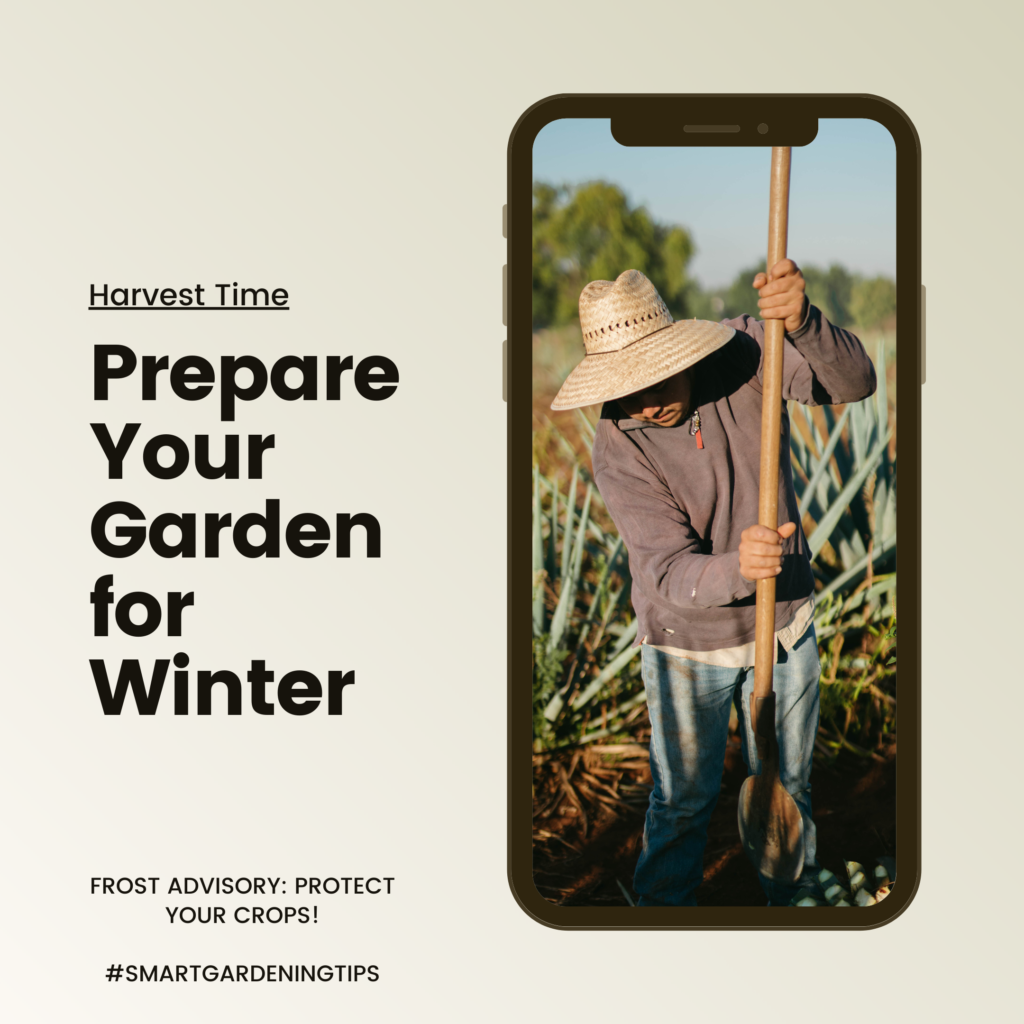
When it comes to harvesting vegetables before the winter frost hits, timing is everything. By optimizing your harvest schedule, you can minimize the risk of damage caused by freezing temperatures and ensure a successful winter harvest. Additionally, taking advantage of the cold tolerance of certain vegetables allows you to extend your harvest well into the winter months.
Timing your vegetable harvest requires careful observation and planning. As the days get shorter and the temperatures drop, keep a close eye on your crops. Harvesting your vegetables just before the first frost is crucial to prevent damage. Check the weather forecast regularly and aim to harvest your crops a few days before the predicted frost date in your region.
Some vegetables, known for their ability to tolerate cold temperatures, can withstand light frost and even thrive in chilly conditions. These hardy vegetables are excellent choices for late-season harvesting:
| Vegetables Tolerating Cold Temperatures |
|---|
| Broccoli |
| Kale |
| Carrots |
| Spinach |
| Brussels sprouts |
| Turnips |
| Parsnips |
These vegetables can tolerate lower temperatures without sustaining significant damage, allowing you to enjoy fresh produce even as winter sets in.
Ensuring a Healthy Winter Harvest
Harvesting before the frost hits is not only about avoiding temperature-related damage but also promoting better flavor and quality in your vegetables. Cool temperatures can enhance the taste and texture of certain crops, making them even more enjoyable to eat.
When harvesting, handle your vegetables with care to prevent bruising or damage. Harvest leafy greens like kale and spinach by gently removing the outer leaves or cutting the entire plant just above the soil level. For root vegetables like carrots and turnips, use a fork or spade to loosen the soil before gently lifting them out to avoid breaking or damaging the roots.
Remember to store your freshly harvested vegetables properly to maximize their shelf life. Clean the vegetables, remove any damaged or diseased portions, and store them in a cool, dark place with proper air circulation, such as a root cellar or a refrigerator. This will help maintain their freshness and quality throughout the winter months.
By timing your harvests before the frost hits and taking advantage of cold-tolerant vegetables, you can enjoy a healthy winter harvest of fresh, flavorful produce. Whether you’re making hearty soups or enjoying vibrant salads, these homegrown vegetables will add a delightful touch to your winter meals.
Using Cold Frames or Row Covers
Protecting your vegetables from the harsh conditions of winter is crucial for a successful harvest. Cold frames and row covers are two effective protective measures that can shield your crops from freezing temperatures, strong winds, and heavy snowfall. By understanding what cold frames and row covers are and how they can be utilized, you can give your vegetables the protection they need to thrive.
Cold Frames: An Overview
Cold frames are enclosed structures with transparent or translucent covers that capture and retain solar heat, creating a microclimate that is warmer than the outside environment. These frames can be made of wood, metal, or even recycled materials, and are placed directly over your vegetable beds or containers.
The transparent cover, often made of glass or plastic, allows sunlight to penetrate while trapping heat inside. This trapped heat helps to keep your vegetables warm during cold weather, extending the growing season and protecting against frost.
Benefits of Using Cold Frames
Using cold frames offers several benefits:
- Extended growing season: Cold frames provide an ideal environment for cool-season crops, allowing you to start planting earlier in the spring and continue growing vegetables late into the fall or even winter.
- Frost protection: The insulated space within the cold frame acts as a barrier against frost, reducing the risk of damage to your crops.
- Protection from harsh weather: Cold frames shield your vegetables from strong winds, heavy snowfall, and other extreme weather conditions, creating a microclimate that is more favorable for plant growth.
- Pest prevention: The enclosed structure of a cold frame can help keep pests and animals away from your crops, minimizing the risk of damage.
Row Covers: A Versatile Option
Row covers, also known as floating row covers or garden blankets, are lightweight, translucent fabrics that are placed directly over your vegetable rows or individual plants. These covers create a protective barrier between your vegetables and the surrounding environment, providing insulation and shielding against frost.
Row covers come in different thicknesses, allowing you to choose the appropriate level of protection for your crops. Thicker covers provide more insulation and are ideal for colder regions, while thinner covers are suitable for mild climates where frost is less severe.
Benefits of Using Row Covers
Here are some advantages of utilizing row covers:
- Frost protection: Row covers create a microclimate that is several degrees warmer than the outside temperature, helping to prevent frost damage.
- Insect control: These covers act as a physical barrier, preventing pests such as aphids, beetles, and caterpillars from reaching your vegetables.
- Wind and hail protection: Row covers shield your crops from strong winds and hail, reducing the risk of physical damage.
- Temperature regulation: By trapping heat during the day and releasing it at night, row covers provide a stable temperature environment for your vegetables.
By utilizing cold frames and row covers, you can protect your vegetables from the challenging conditions of winter and increase your chances of a successful harvest. Consider incorporating these protective measures into your winter gardening routine for healthy, thriving crops throughout the cold season.
Mulching for Winter Protection
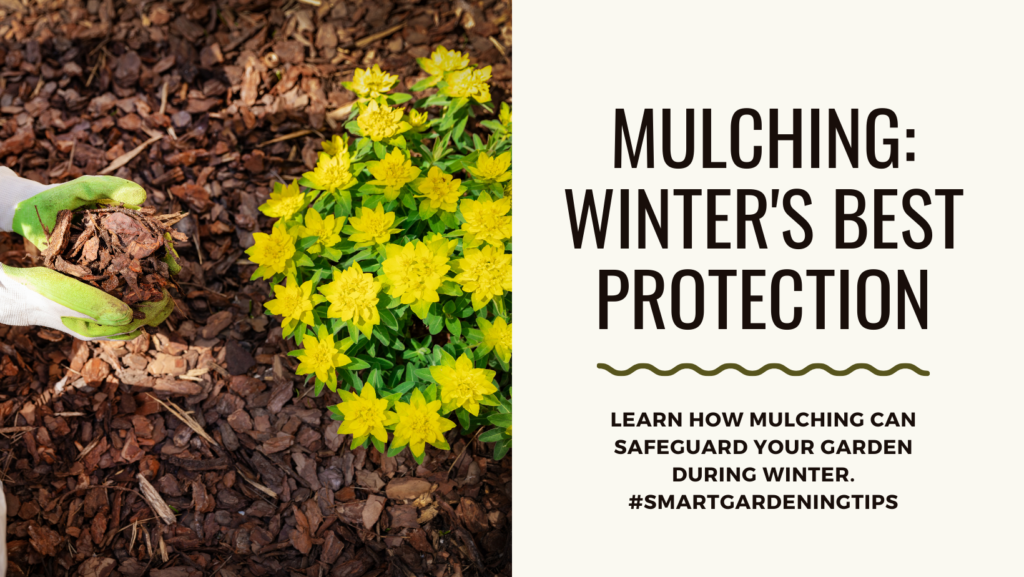
Mulching is a valuable technique for winter protection and maintaining the health of your vegetables. During the winter season, when temperatures drop and frost threatens your plants, mulching can provide a layer of insulation, regulate temperature fluctuations, retain moisture, and prevent weed growth. By applying the right type of mulch, you can create optimal conditions for your vegetables to thrive and ensure a successful winter harvest.
Various types of mulch are suitable for protecting your plants during the cold season. Let’s explore some common types and their benefits:
| Type of Mulch | Benefits |
|---|---|
| Straw | – Insulates the soil – Regulates temperature – Retains moisture – Discourages weed growth |
| Leaves | – Acts as an insulating layer – Provides organic matter as it decomposes – Helps retain moisture – Suppresses weeds |
| Pine Needles | – Provides insulation – Maintains soil acidity – Deters weed growth – Enhances aesthetics in garden beds |
| Wood Chips | – Provides insulation – Helps retain moisture – Suppresses weeds – Adds organic matter to the soil as it breaks down |
When mulching, ensure that you apply a layer of 2-4 inches thickness around the base of your plants, leaving a small gap around the stem to prevent rotting. It is important to avoid piling mulch directly against the stems to prevent moisture retention, which can encourage diseases. Mulching before the first frost of the season will help prepare your plants and protect them from the harsh winter conditions.
The Benefits of Mulching for Winter Protection
“Mulching can significantly improve plant survival rates during the winter by providing insulation, regulating temperature, and preserving moisture levels.” – Gardening Expert
By mulching your vegetable beds during winter, you create a protective barrier against freezing temperatures and extreme weather conditions. The insulation provided by mulch helps to keep the soil warmer, preventing the roots from freezing and reducing temperature fluctuations that can stress or damage plants. Additionally, mulch helps the soil retain moisture, reducing the risk of dehydration, and creating a more stable environment for root growth and nutrient absorption.
The layer of mulch also acts as a natural weed barrier, preventing unwanted vegetation from sprouting and competing with your vegetables for nutrients and water. This reduces the need for weeding and minimizes the risk of weed-related diseases. Furthermore, as the mulch breaks down over time, it enriches the soil with organic matter, improving soil structure, nutrient availability, and microbial activity.
In summary, mulching is an essential practice for winter protection in vegetable care. By carefully selecting the appropriate mulch and applying it correctly, you can create a nurturing environment for your plants, ensuring their survival and promoting healthy growth during the challenging cold season.
Pest Control Strategies
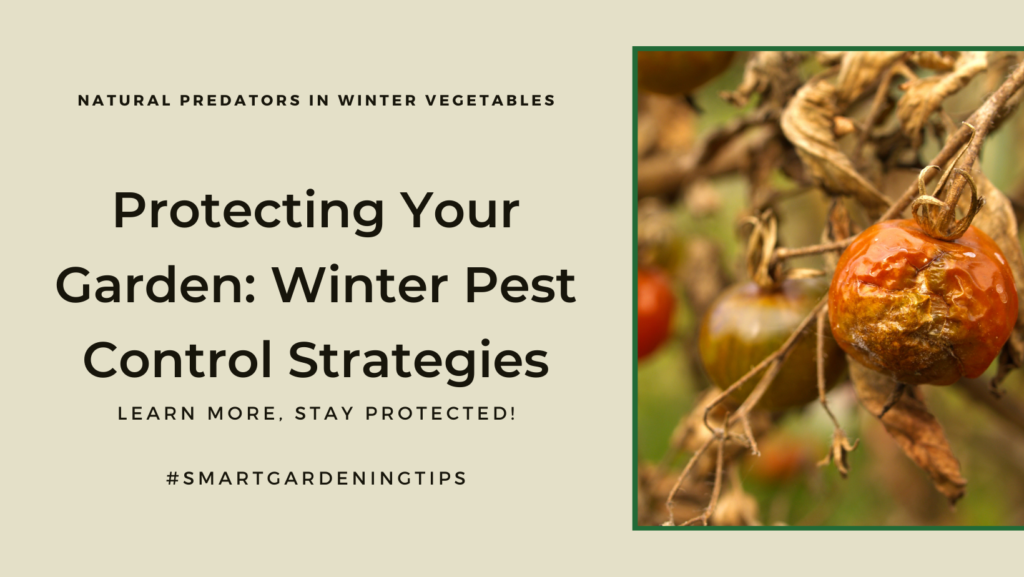
Pest control remains important even in cold seasons, as certain pests can still pose a threat to your vegetables. Implementing effective pest prevention and management strategies is crucial to safeguarding your crops and preventing pest-related damage during the winter months.
1. Regular Inspection and Monitoring
During the winter season, pests like rodents, insects, and fungal pathogens can still survive and cause damage to your vegetables. Conduct regular inspections of your plants to identify any signs of pest infestation. Look for signs of chewing, holes in leaves, wilting, or discoloration. By monitoring your crops closely, you can take timely action to prevent pests from causing significant harm.
2. Cleanliness and Sanitation
Maintaining cleanliness and sanitation in your garden or growing area is essential for pest control. Remove any debris, fallen leaves, or decaying plant matter as they can serve as breeding grounds for pests. Keep the area tidy and free from hiding places for pests. Regularly clean your tools and equipment to prevent the transfer of pests from one area to another.
3. Crop Rotation
Practicing crop rotation helps break the life cycle of pests and reduces the risk of infestation. Avoid planting the same vegetables in the same soil area year after year. Instead, rotate your crops to different areas of your garden. This helps disrupt pests’ breeding patterns and reduces their population, keeping your vegetables healthier and less susceptible to pest damage.
4. Natural Predators
Encouraging natural predators in your garden can be an effective way to control pests. Birds, ladybugs, and praying mantises are examples of beneficial insects that feed on garden pests. Create a conducive environment for these natural predators by planting flowers that attract them or providing nesting sites and shelters. They will help keep pest populations in check naturally.
FAQ
Q. Why is it important to maintain vegetables during cold seasons?
A. Maintaining vegetables during cold seasons is important to protect them from frost damage and ensure a successful winter harvest. By implementing appropriate strategies, you can extend the growing season and enjoy fresh vegetables throughout the cold months.
Q. What challenges are faced in winter for vegetable cultivation?
A. Winter brings challenges such as low temperatures, frost, and shorter daylight hours, which can impact plant growth and survival. Understanding these challenges will help you prepare and implement effective strategies for maintaining your vegetables during the cold season.
Q. Why is timing important in harvesting vegetables before the frost hits?
A. Harvesting vegetables before the frost hits is crucial to minimize the risk of damage caused by freezing temperatures. By harvesting crops at the right time, you can ensure a successful winter harvest.
Q. Which vegetables can tolerate colder temperatures?
A. Some vegetables are more tolerant to cold temperatures and can be harvested later into the winter season. Examples of these vegetables include kale, spinach, Brussels sprouts, and carrots.
Q. What are cold frames and row covers, and how can they protect vegetables?
A. Cold frames and row covers are protective measures that shield vegetables from harsh winter conditions. Cold frames are structures with transparent tops that trap heat, while row covers are lightweight fabric covers that insulate plants. They help protect crops from freezing temperatures, strong winds, and heavy snowfall.
Q. What are the benefits of using cold frames and row covers?
A. Using cold frames and row covers provides several benefits, including extending the growing season, creating a microclimate for plants, protecting crops from frost and cold temperatures, and minimizing damage caused by harsh winter weather.
Q. How can mulching help protect vegetables in winter?
A. Mulching is a valuable technique for winter protection. It insulates the soil, regulates temperature, retains moisture, prevents weed growth, and reduces soil erosion. By applying the right mulch, you can create optimal conditions for your vegetables to thrive during the cold season.
Q. What types of mulch are suitable for protecting vegetables in winter?
A. Types of mulch suitable for winter protection include straw, shredded leaves, hay, wood chips, and compost. These materials help insulate the soil and protect vegetable roots from freezing temperatures.
Q. Why is pest control important in cold seasons?
A. Pest control remains important even in cold seasons, as certain pests can still pose a threat to your vegetables. Implementing pest control strategies helps prevent damage to your crops and ensures a healthy winter harvest.
Q. What methods can be used for preventing and managing pests during winter?
A. Methods for preventing and managing pests during winter include regular inspection of plants, removal of infected vegetation, using organic pest repellents, practicing crop rotation, and employing physical barriers like row covers for protection.
Conclusion
Maintaining vegetables in cold seasons requires careful planning and implementation of appropriate strategies. By understanding the challenges posed by low temperatures and frost, timing your harvests, utilizing protective measures like cold frames and row covers, applying mulching techniques, and implementing effective pest control strategies, you can ensure a healthy and bountiful winter harvest of vegetables.
Timing is crucial when it comes to harvesting vegetables before the frost hits. By harvesting your crops at the right time, you can minimize the risk of damage caused by freezing temperatures. Certain vegetables, such as kale, carrots, and Brussels sprouts, are more tolerant to cold temperatures and can be harvested later into the winter season.
In addition to proper timing, using cold frames and row covers can provide protection against harsh winter conditions such as freezing temperatures, strong winds, and heavy snowfall. Mulching is another valuable technique for winter protection, as it helps insulate the soil and regulate temperature, while preventing weed growth. Implementing effective pest control strategies throughout the winter season is also crucial to safeguarding your crops.
By embracing these tips and implementing the appropriate strategies, you can enjoy a fresh and abundant supply of vegetables throughout the cold months. So, start planning your winter harvest today and savor the delicious flavors of homegrown produce even during the coldest times of the year!
















